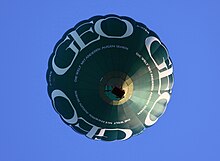Europe, the westernmost portion of Eurasia, is often divided into regions and subregions based on geographical, cultural or historical factors. Since there is no universal agreement on Europe's regional composition, the placement of individual countries may vary based on criteria being used. For instance, the Balkans is a distinct geographical region within Europe, but individual countries may alternatively be grouped into South-eastern Europe or Southern Europe.
The Central European Olympiad in Informatics (CEOI) is an annual informatics competition for secondary school students. Each of the participating central European countries (plus one or two guest countries, and a local team from the host area) sends a team of up to four contestants, a team leader and a deputy team leader. The contestants compete individually, i.e. a team score is not calculated. Competitors are selected through national competitive programming contests.

The International Cartographic Association (ICA) is an organization formed of national member organizations, to provide a forum for issues and techniques in cartography and geographic information science (GIScience). ICA was founded on June 9, 1959, in Bern, Switzerland. The first General Assembly was held in Paris in 1961. The mission of the International Cartographic Association is to promote the disciplines and professions of cartography and GIScience in an international context. To achieve these aims, the ICA works with national and international governmental and commercial bodies, and with other international scientific societies.

EuroVoc is a multilingual thesaurus maintained by the Publications Office of the European Union and hosted on the portal Europa. It exists in the 24 official languages of the European Union plus Albanian, Macedonian and Serbian, although the user interface is not yet available in these languages.
East-Central Europe is the region between German-, Hungarian-, and West Slavic-speaking Europe and the East Slavic countries of Belarus, Russia, and Ukraine. Those lands are described as situated "between two": "between two worlds, between two stages, between two futures".

This is a list of the Romania national football team results from 2000 to 2019:

The 2013 European Athletics U23 Championships were the 9th edition of the biennial athletics competition between European athletes under the age of twenty-three. It was held in Tampere, Finland from 10 to 14 July.
This is a list of all Slovakia national football team results against other national teams to the present day.
The 2019 FIBA Basketball World Cupqualification for the FIBA Europe region, began in August 2017 and concluded in February 2019. Contrary to previous years, no teams were automatically placed into the World Cup, so all FIBA Europe nations had to participate in qualification.
The 2008 European Women Sevens Championship was the sixth edition of the European Women's Sevens Championship.
The 2009 European Women Sevens Championship was the seventh edition of the European Women's Sevens Championship.
The 2010 European Women Sevens Championship was the eighth edition of the European Women's Sevens Championship.
The 2011 European Women Sevens Championship was the ninth edition of the European Women's Sevens Championship.
The 2012 European Women Sevens Championship was the tenth edition of the European Women's Sevens Championship.
The Slovenia national football team represents Slovenia in association football and is controlled by the Football Association of Slovenia, the governing body for football in Slovenia. It competes as a member of the Union of European Football Associations (UEFA), which encompasses the countries of Europe. Slovenia joined UEFA and the International Federation of Association Football (FIFA) in 1992, a year after the country gained independence from the Socialist Federal Republic of Yugoslavia.
This page describes the qualification procedure for EuroBasket Women 2019.
This page describes the qualification procedure for FIBA Women's EuroBasket 2021. 14 teams joined the co-hosts France and Spain.
The EuroBasket Women 2023 qualification was held from November 2021 to February 2023 to decide the 14 teams to join the co-hosts Israel and Slovenia. It featured 38 teams split in ten groups of three or four teams. The ten group winners and the four best second-ranked teams qualified for the final tournament.





